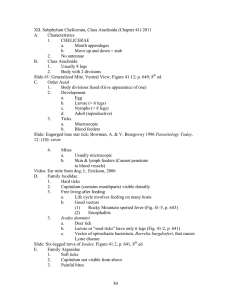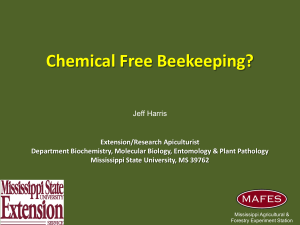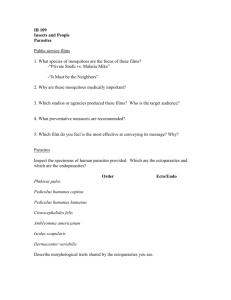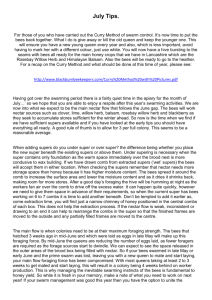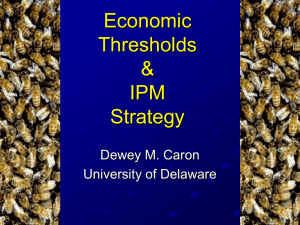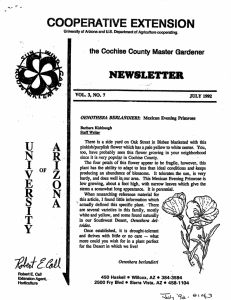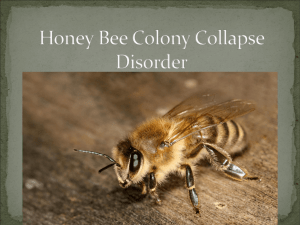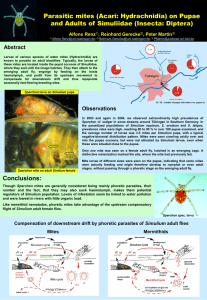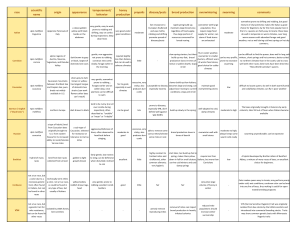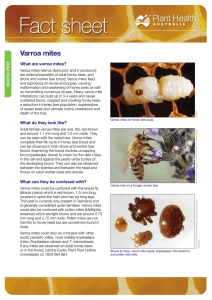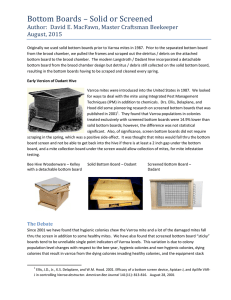Name Advantages Disadvantages Apivar (Amitraz) Strip Spring/Fall
advertisement
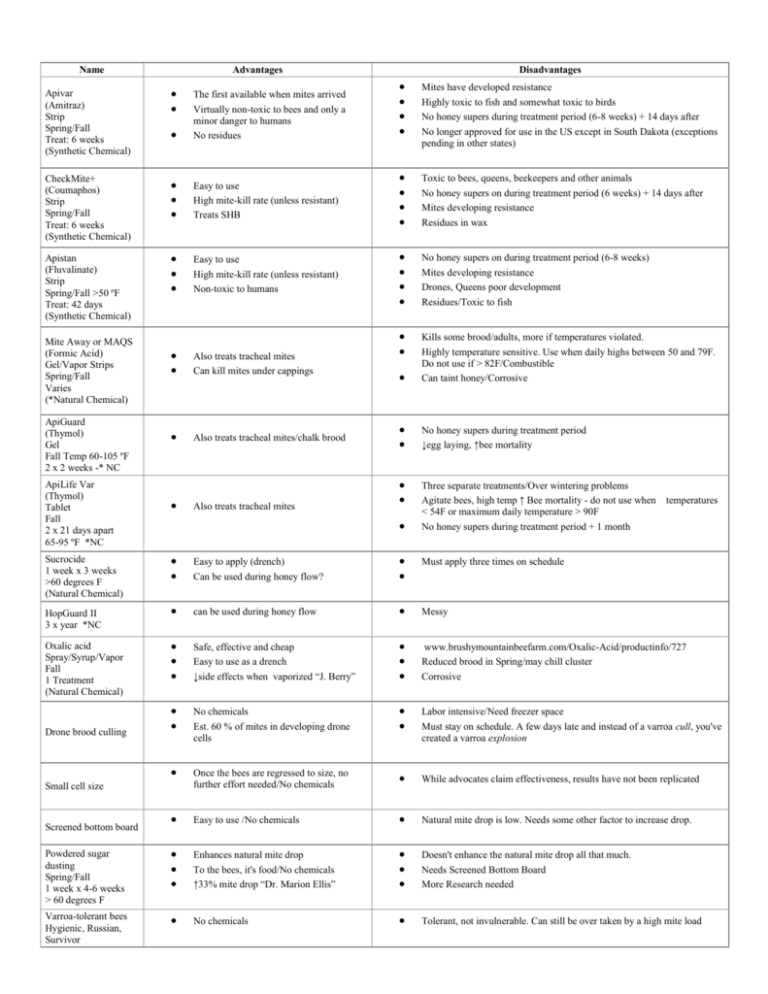
Name Advantages Disadvantages Mites have developed resistance Highly toxic to fish and somewhat toxic to birds No honey supers during treatment period (6-8 weeks) + 14 days after No longer approved for use in the US except in South Dakota (exceptions pending in other states) Apivar (Amitraz) Strip Spring/Fall Treat: 6 weeks (Synthetic Chemical) The first available when mites arrived Virtually non-toxic to bees and only a minor danger to humans No residues CheckMite+ (Coumaphos) Strip Spring/Fall Treat: 6 weeks (Synthetic Chemical) Easy to use High mite-kill rate (unless resistant) Treats SHB Toxic to bees, queens, beekeepers and other animals No honey supers on during treatment period (6 weeks) + 14 days after Mites developing resistance Residues in wax Apistan (Fluvalinate) Strip Spring/Fall >50 ºF Treat: 42 days (Synthetic Chemical) Easy to use High mite-kill rate (unless resistant) Non-toxic to humans No honey supers on during treatment period (6-8 weeks) Mites developing resistance Drones, Queens poor development Residues/Toxic to fish Mite Away or MAQS (Formic Acid) Gel/Vapor Strips Spring/Fall Varies (*Natural Chemical) ApiGuard (Thymol) Gel Fall Temp 60-105 ºF 2 x 2 weeks -* NC ApiLife Var (Thymol) Tablet Fall 2 x 21 days apart 65-95 ºF *NC Sucrocide 1 week x 3 weeks >60 degrees F (Natural Chemical) HopGuard II 3 x year *NC Oxalic acid Spray/Syrup/Vapor Fall 1 Treatment (Natural Chemical) Drone brood culling Also treats tracheal mites Can kill mites under cappings Also treats tracheal mites/chalk brood Also treats tracheal mites Kills some brood/adults, more if temperatures violated. Highly temperature sensitive. Use when daily highs between 50 and 79F. Do not use if > 82F/Combustible Can taint honey/Corrosive No honey supers during treatment period ↓egg laying, ↑bee mortality Three separate treatments/Over wintering problems Agitate bees, high temp ↑ Bee mortality - do not use when < 54F or maximum daily temperature > 90F No honey supers during treatment period + 1 month temperatures Easy to apply (drench) Can be used during honey flow? Must apply three times on schedule can be used during honey flow Messy Safe, effective and cheap Easy to use as a drench ↓side effects when vaporized “J. Berry” www.brushymountainbeefarm.com/Oxalic-Acid/productinfo/727 Reduced brood in Spring/may chill cluster Corrosive No chemicals Est. 60 % of mites in developing drone cells Labor intensive/Need freezer space Must stay on schedule. A few days late and instead of a varroa cull, you've created a varroa explosion Once the bees are regressed to size, no further effort needed/No chemicals While advocates claim effectiveness, results have not been replicated Easy to use /No chemicals Natural mite drop is low. Needs some other factor to increase drop. Powdered sugar dusting Spring/Fall 1 week x 4-6 weeks > 60 degrees F Enhances natural mite drop To the bees, it's food/No chemicals ↑33% mite drop “Dr. Marion Ellis” Doesn't enhance the natural mite drop all that much. Needs Screened Bottom Board More Research needed Varroa-tolerant bees Hygienic, Russian, Survivor No chemicals Tolerant, not invulnerable. Can still be over taken by a high mite load Small cell size Screened bottom board
